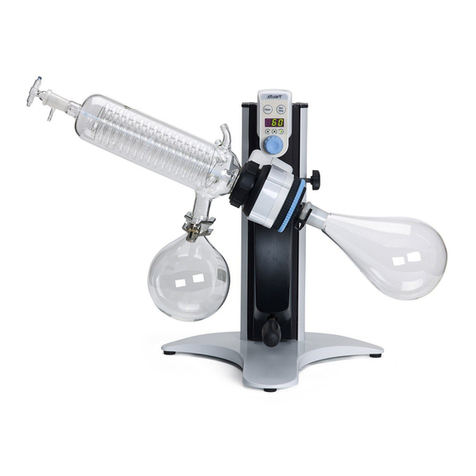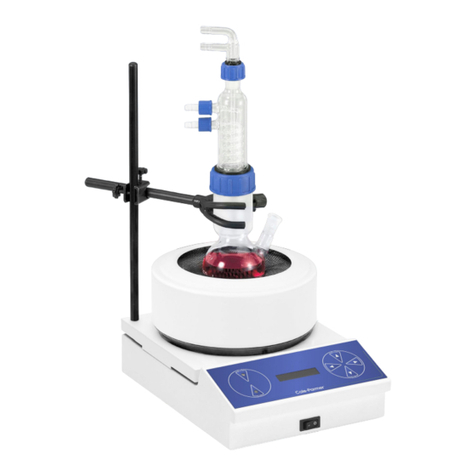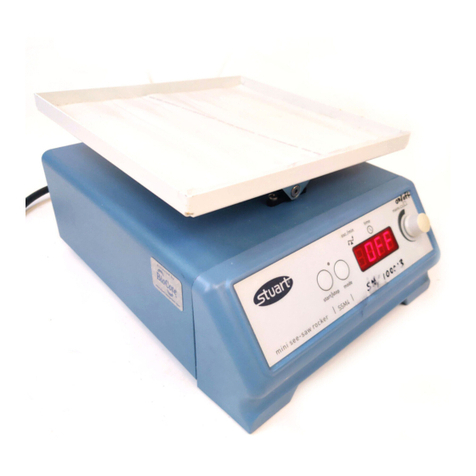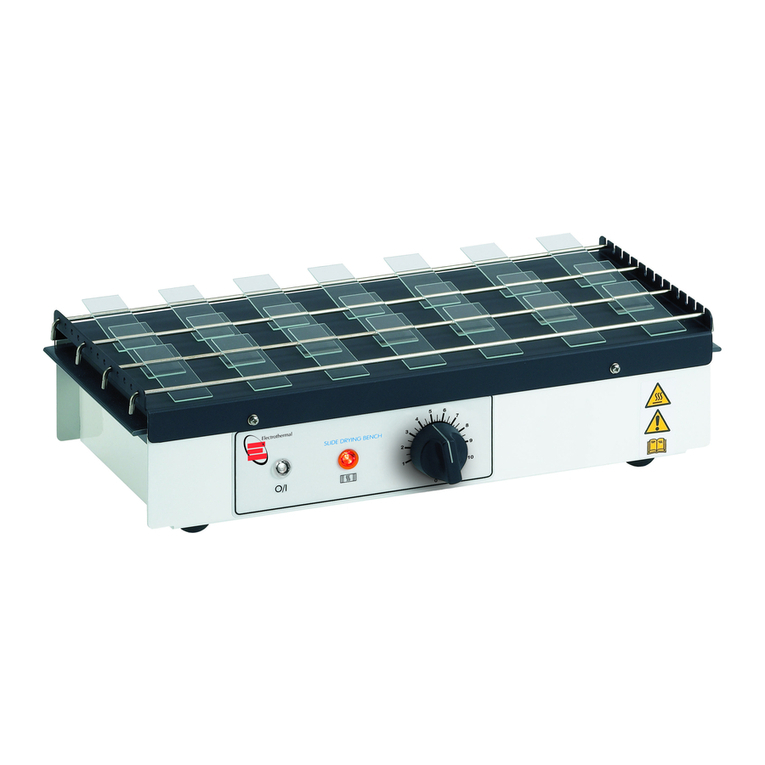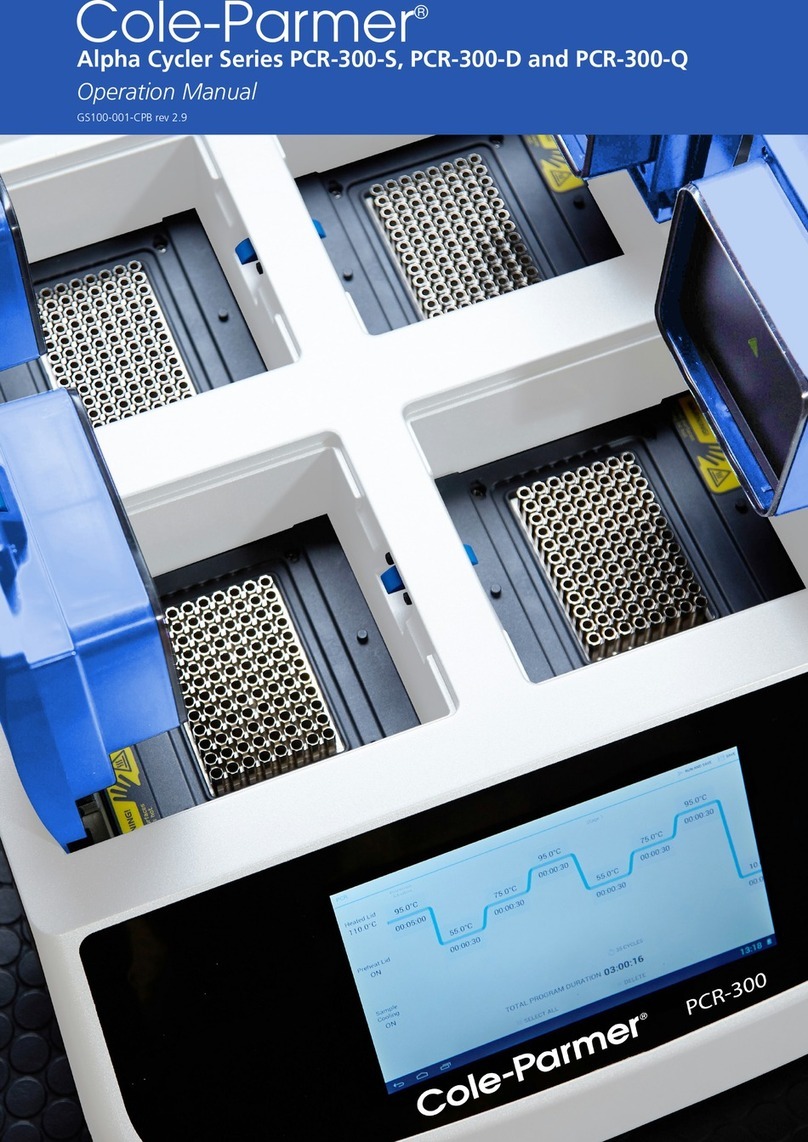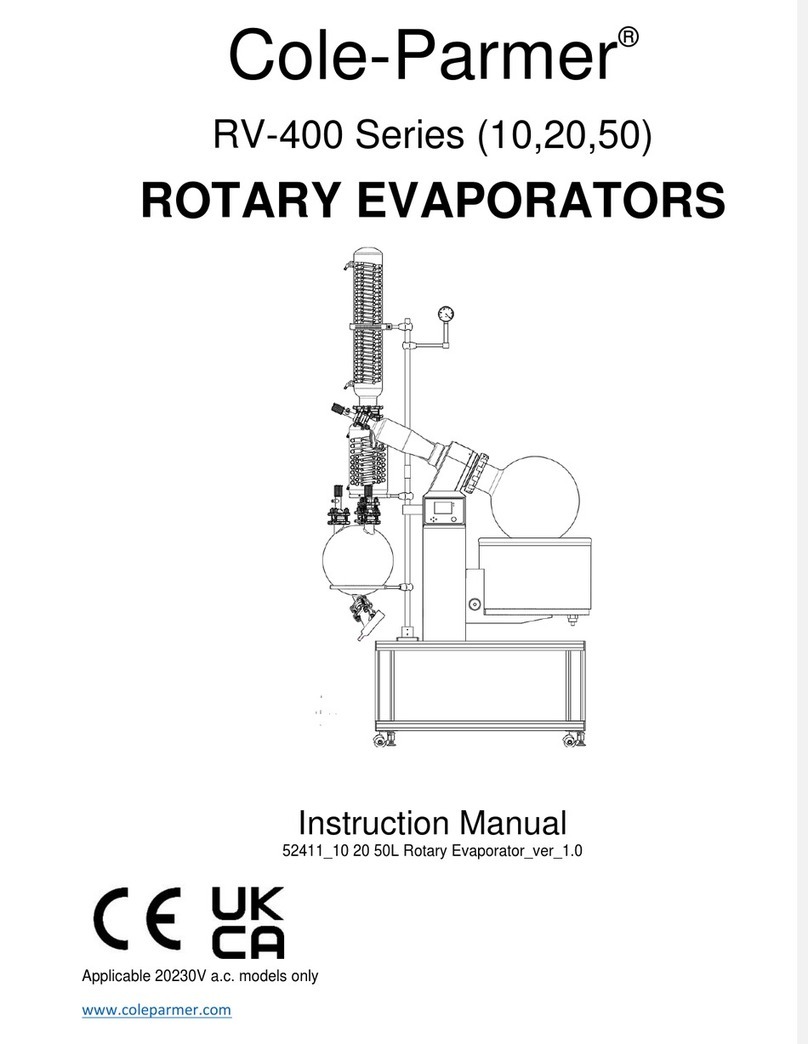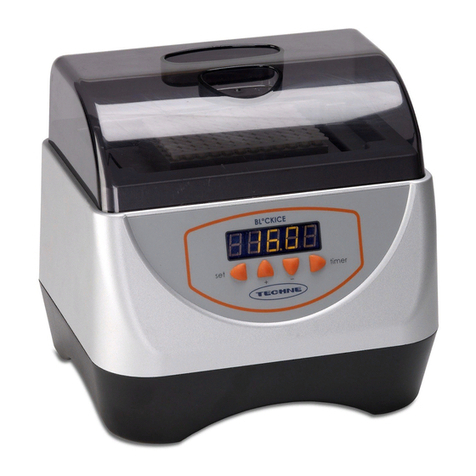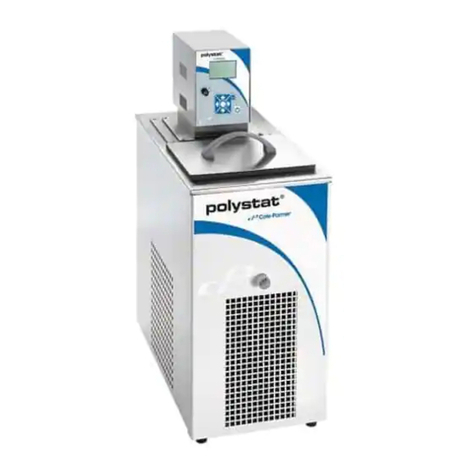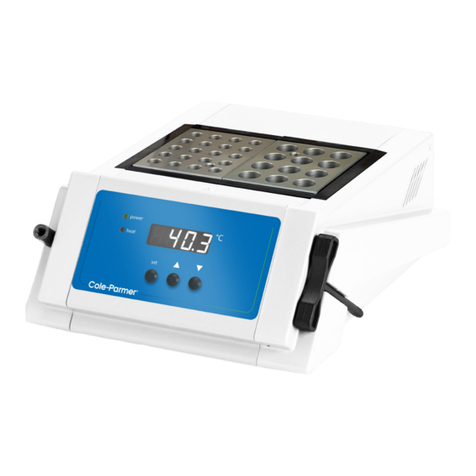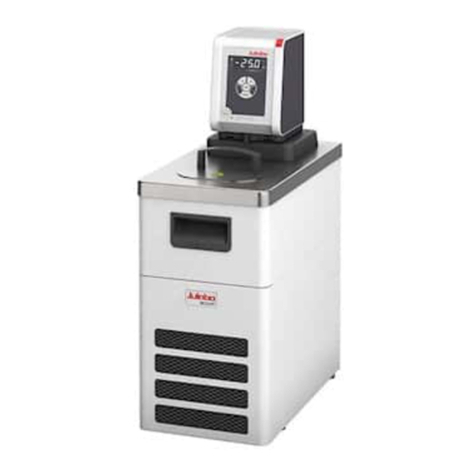HG-600 Geno/Grinder® 2010
1300-87055-1M, REV 6 Cole-Parmer® Page 5 of 36
1.0 INTRODUCTION
The HG-600 Geno/Grinder® was re-engineered with a new look and updated features. The
features include: programmable and operating commands through a series of touchscreen
displays, administrative lockout (passcode) which allows Lab Manager to restrict user access
to specific protocols, self-diagnostics, larger observation window, improved visibility of
sample loading area, and the new clamp orientation makes it easier to load/unload
samples.
The Geno/Grinder® is designed to effectively disrupt cellular materials by vertically
oscillating two or more deep-well titer plates, jars, tubes, or vials. This motion allows the
unit to be used to prepare sample tissue for extractions of nucleic acid, proteins, and other
constituents by agitating the tissue, steel balls or beads, and a lysis agent together in each
well of the titer plate, tube, or vial.
Operation is simple: the titer plates, jars, tubes, or vials are secured in a clamp, and the
cabinet lid closed. The controls are checked for the proper running time, stroke rate,
number of cycles, pause time and the RUN button pushed. When the run is complete, the
lid is lifted and the titer plates, jars, tubes, or vials are unclamped.
The isolation of nucleic acids from intact samples requires mechanically disrupting the
samples, followed by the extraction and subsequent purification of the nucleic acid.
Mechanical tissue disruption is often performed manually with a mortar and pestle, an
approach that is not practical for high-throughput screening since manual grinding of
tissues is slow, and re-use of mortars and pestles may lead to cross-contamination.
Alternatively, nucleic acids can be isolated in a multi-well titer plate, tubes, or vials using
balls or beads that mechanically disrupt the sample. Conventional isolation methodologies
can then be used to extract the nucleic acids from the homogenate.
Sample materials that can be prepared include seeds, stems, roots, leaves, and certain
animal tissue. Because the unique vertical shaking motion of the Geno/Grinder® is so
strong, many seeds and other forms of plant tissue can also be pulverized dry in titer plates,
jars, tubes, or vials with the help of one or two grinding balls per well, jar, tube or vial.
The Geno/Grinder® is also highly effective at improving extractions from food products,
such as for pesticide analysis according to the QuEChERS1method. A pre-cut fruit or
vegetable sample of 10-15 g is placed in a 50 ml conical centrifuge tube and the appropriate
salts and solvent are added. Two ceramic grinding cylinders are added; the tubes are
capped and shaken on the Geno/Grinder® for 1 min. Following clean-up, the samples are
analyzed by LC or GC-MS. Pesticide recovery in samples prepared using the Geno/Grinder®
has been found to be significantly improved over samples prepared manually.
1QuEChERS method developed by the USDA Eastern Regional Research Center. M. Anastassiades, S.J. Lehotay,
D. Stajnbaher, F.J. Schenck, J. AOAC International 86, p. 412-431 (2003).

